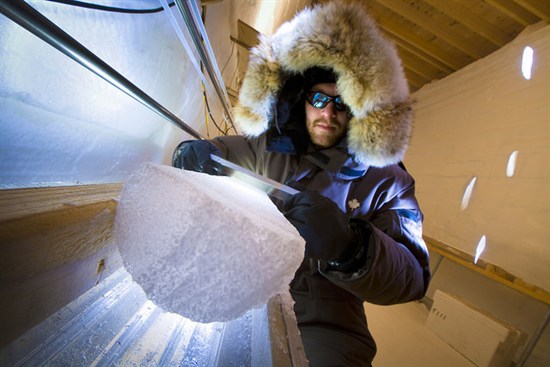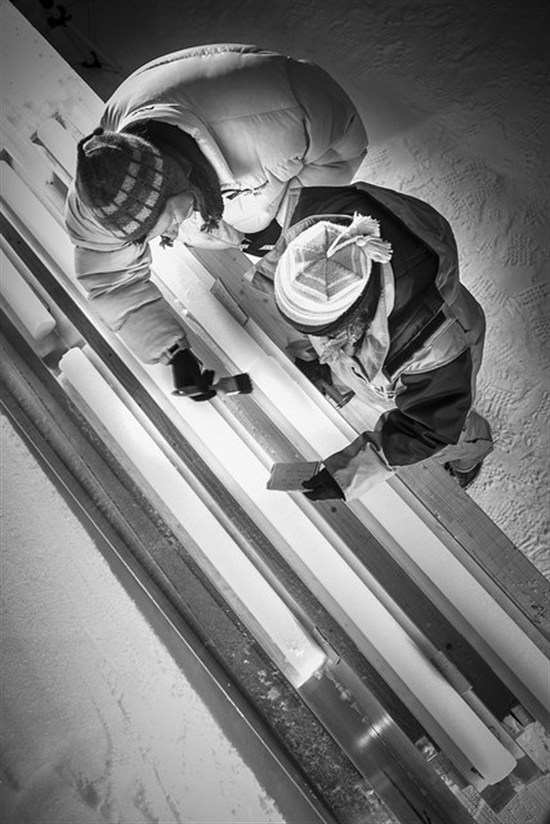Robert McSweeney
04.09.2014 | 7:09pmScientists have long known that carbon dioxide is the main cause of most of the warming we’ve seen since pre-industrial times. But there are periods in the Earth’s distant past when the connection between carbon dioxide and temperature rise has been harder to see.
New research into Greenland’s ice sheets now seems to have explained one of the mysteries of our climatic past, confirming the importance of carbon dioxide on global temperature changes.
Mystery interval
Around 20,000 years ago the Earth was emerging from an ice age as orbital changes meant it received slightly more of the sun’s energy.
As ice sheets melted into the oceans, sea levels rose and ocean circulation patterns changed.
Scientists think these changes caused carbon dioxide from the oceans to be released into the atmosphere.
Yet despite the planet being closer to the sun and higher levels of carbon dioxide, records for Greenland didn’t seem to show much change in temperature. While the rest of the northern hemisphere appeared to warm, Greenland didn’t seem to follow suit for another 3,000 years. Scientists couldn’t explain why, and it was even dubbed the ‘mystery interval’ by one study.
But now the new study published in the journal Science suggests that temperatures actually had risen – but the rise wasn’t captured by earlier ice core records.
Bo Vinther, co-author on the study, preparing an ice core for inspection. Oregon State University
Proxy data
To understand how temperatures changed thousands of years ago scientists use a set of techniques called ”palaeoclimatology’ which look for places where climate information is stored, like tree rings, lake sediments and ice cores.
Ice cores can be extracted by drilling into ice sheets. These giant vertical samples contain years and years of compacted snow in a chronological record – allowing scientists to reconstruct past temperature and rainfall.
Two researchers are inspecting freshly drilled ice cores. Oregon State University
Ice bubbles
Previously, scientists had analysed oxygen in the ice itself to unlock secrets of past climate. This analysis had led to the conclusions about delayed warming in Greenland.
But in the new study, scientists from Oregon State University analysed nitrogen in tiny air bubbles held in the ice cores instead.
There is an important difference. Analysing the chemical makeup of ice can be affected by changes to the water cycle, the same isn’t true for air, allowing for a more accurate reconstruction of what happened in Greenland, the researchers say.
Analysis from three ice cores in Greenland showed not only that temperatures rose along with atmospheric carbon dioxide during the mystery period, but also that the warming trend of around 5 °C closely matched what climate models said should happen.
And the method could be applied in the Antarctic as well. Dr Louise Sime from the British Antarctic Survey, who wrote a comment article to go with paper, told us:
“It would be exciting if similar methods could be applied to the Antarctic ice core record, since we also lack continuous independent temperature reconstructions for this region.”
This could help scientists understand how temperature changes affect ice sheets in Antarctica. Sime says the method could be used to “pin down temperature changes which might trigger the loss of the West Antarctic ice sheet.”
In solving the Greenland puzzle, the study has reinforced in a small way the connection between atmospheric carbon dioxide and global temperatures, and perhaps serves as a reminder that even small changes to the Earth’s energy balance can lead to big changes to our climate.
Buizert, C. et al. (2014) Greenland Ice Cores Reveal Long-Sought Temperature Data, Science, doi/10.1126/science.1254961
Accompanying Perspectives article: Sime, L.C. (2014) Greenland deglaciation puzzles, Science, doi/10.1126/science.1257842



